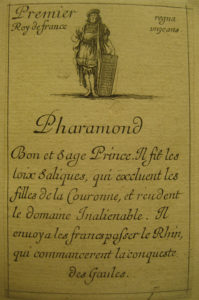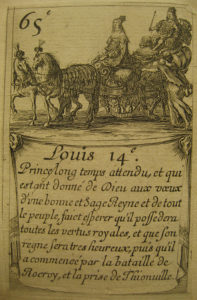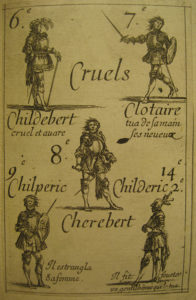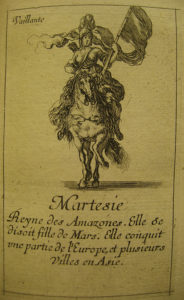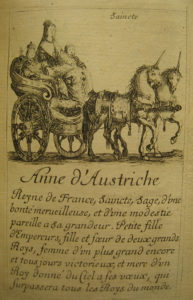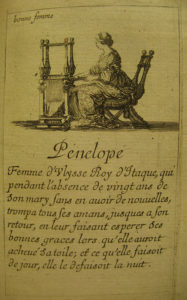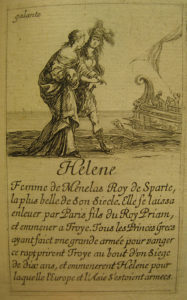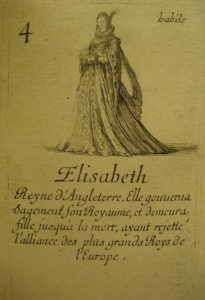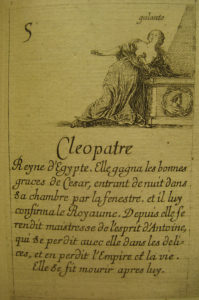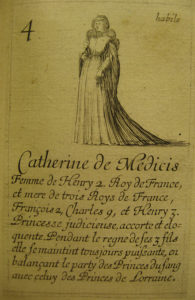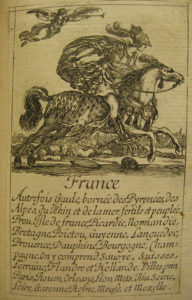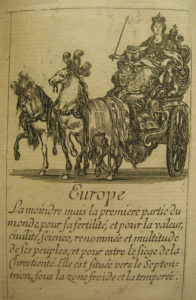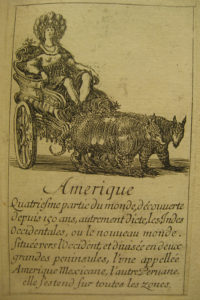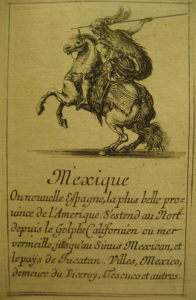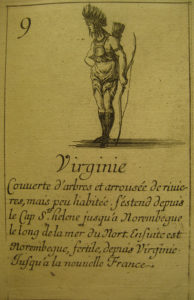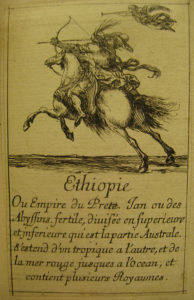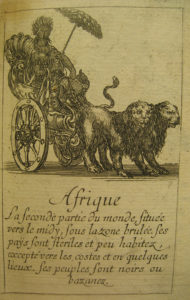Author: Paul Burnett
The Berkeley Remix Podcast, Season 4, Episode 2, “Berkeley Lightning: A Public University’s Role in the Rise of Silicon Valley”
“We’re used to hearing about how game-changing technology makes whole new ways of living and working possible. But what makes the game-changing technologies possible? We’re going to talk about Berkeley’s contribution in this domain, a bit upstream from the technology we all know.”
This season of the Berkeley Remix we’re bringing to life stories about our home — UC Berkeley — from our collection of thousands of oral histories. Please join us for our fourth season, Let There Be Light: 150 Years at UC Berkeley, inspired by the University’s motto, Fiat Lux. Our episodes this season explore issues of identity — where we’ve been, who we are now, the powerful impact Berkeley’s identity as a public institution has had on student and academic life, and the intertwined history of campus and community.
The three-episode season explores how housing has been on the front lines of the battle for student welfare throughout the University’s history; how UC Berkeley created a culture of innovation that made game-changing technologies possible; and how political activism on campus was a motivator for the farm-to-table food scene in the city of Berkeley. All episodes include audio from interviews from the Oral History Center of The Bancroft Library.

Episode 2, “Berkeley Lightning: A Public University’s Role in the Rise of Silicon Valley,” is about the contributions of UC Berkeley Engineering to the rise of the semiconductor industry in what became known as Silicon Valley in the 1960s and 70s. In contrast to the influential entrepreneurial spirit of a private university like Stanford, Berkeley’s status as a public institution had a different impact on Silicon Valley. We focus on the development of the first widely used design program for prototyping microchips. Originally designed by and for students, the software spread like lightning in part because Berkeley, as a public institution, made it available free of charge. The world has not been the same since.
This episode uses audio from the Oral History Center of The Bancroft Library, including interviews with Paul R. Gray, Professor of Engineering Emeritus, Department of Electrical Engineering and Computer Science and Dr. Laurence Nagel, CEO of Omega Enterprises, former senior manager at Bell Laboratories, with a PhD from UC Berkeley EECS (oral history forthcoming).
“Berkeley Lightning” was produced, written, narrated, and edited by Oral History Center historian Paul Burnett.
The following is a written version of the The Berkeley Remix Podcast Season 4, Episode 2, “Berkeley Lightning: A Public University’s Role in the Rise of Silicon Valley. ”
Narration: Silicon Valley. It’s a real place, the valley roughly encompassed by Santa Clara County at the southern end of San Francisco Bay. But it’s also a mythic place, with just the right combination of top universities, electronics firms, defense dollars, and a concentration of rare, plucky college-dropout geniuses who would go on to hatch world-changing technologies in suburban garages.
We want to take that apart a bit. The university that looms largest in nearly every story of the rise of Silicon Valley is near the heart of that actual valley, Stanford University. But about 30 miles north, on the eastern edge of the Bay, lies the University of California, Berkeley, a longstanding rival to Stanford, if football is your game.
Our story here focuses on this other university, a public, state university, that established institutions and teams to develop innovations that would make the culture of innovation possible. There are many different stories we could tell about Berkeley’s role in the rise of Silicon Valley, from specific technologies such as flash memory to digital-to-analog conversion, aka the hardware and software that make it possible for you to listen to me right now.
We’re used to hearing about how game-changing technology makes whole new ways of living and working possible. But what makes the game-changing technologies possible? We’re going to talk about Berkeley’s contribution in this domain, a bit upstream from the technology we all know.
The centerpiece of just about any discussion of Silicon Valley is the development of its namesake, the silicon microchip, a tiny wafer packed with an ever-growing number of all the components that make up an electronic circuit in this microscopic space, what comes to be called an integrated circuit. Chief among these components is the transistor. Transistors do many things, but among them is to act as a switch, which allows them to process digital information, zeros or ones, much more efficiently and cheaply than tube-based mainframe computers, the ones that used to fill up entire basements of office buildings. When the transistor was invented, the race was on to increase the density and number of transistors. There are a few reasons why you want to make these integrated circuits smaller and denser. For one thing, they work better and more efficiently. And, you can cram them into small spaces, such as at the tip of a missile, for example.
But imagine how tricky they are to make. Here is Berkeley engineering professor Paul Gray explaining the dimensions of the microchip.
Gray: It was probably maybe fifty mils by a hundred mils. A mil is a thousandth of an inch. So that would be a tenth of an inch in one dimension and one-twentieth of an inch in the other dimension.
Narration: And here is Larry Nagel, who was a student at Berkeley’s microelectronics lab in the 1960s, on making chip prototypes.
Nagel: And being a little bit clumsy we had to make up for a couple of times when things got dropped and things got otherwise messed up. So I guess I was probably working maybe probably four weeks at that before I had a chip that actually worked.
Narration: Now this was not normal, routine work for an electrical engineering student in the 1960s. Just a handful of universities that had links the electronics industry and to military research had founded specialized microelectronics labs by the early 1960s. Here’s Dr. Gray again:
Gray: Berkeley had started the country’s first laboratory in which you could fabricate an integrated circuit. And that was in the about ’63, ’64 timeframe…Don Pederson was the faculty member here who really spearheaded the establishment of that laboratory. In that era Stanford and MIT also were starting labs—I think Berkeley was the first and then Stanford and MIT, some a year or two or three later, also got on the same track. … Berkeley and Stanford and MIT continued for the next several decades as the main institutions with this fabrication capability. And we still have a big lab, fabrication facility over there in the CITRIS Building.
Narration: So, UC Berkeley was the first university in the country to have a microchip fabrication facility. But that’s just the beginning. You have to understand that making microchips, by hand, is hard, really hard, and time-consuming.
Nagel: Well, just to build the circuit alone would probably take a couple of days for a hundred transistors for a kit. Maybe for a twenty transistor circuit a day. So one or two days, something of that order of magnitude. But actually measuring and getting the thing to work right, debugging it, could take a good deal longer than that. That could take weeks.
Narration: But from the time the microelectronics lab was founded until the end of the 1960s, the number of transistors on the same space on a chip went way up.
Gray: We were building chips that had on the order of a hundred transistors on them. It’s very difficult to predict by building a physical breadboard or a prototype out of discrete components how a chip like that’s going to behave electrically. You really needed circuit simulation even at that point, a program that would simulate the electrical behavior of a circuit.
Narration: Now if a computer program could do the work of prototyping a circuit, you wouldn’t have to waste time building dud after dud. As a student at the University of Arizona, Paul Gray then learned about the work at Berkeley from his mentor, David Holland. And when Gray went off to work down in the valley at Fairchild Semiconductor, right around the time that Gordon Moore and others split off to found Intel, he recognized the importance of the work that Berkeley researchers were doing.
Gray: I do remember having a lot of connections with universities in general, Berkeley and Stanford, on various topics in those years. Of course, we were in an industrial park created by Fred Terman, owned by Stanford. We were on their land. But I don’t remember having a sense of a Stanford dominance of the landscape in terms of university engagements. We had a lot of interaction with the Berkeley people because of the computer-aided design activity. Don and his group here at Berkeley were developing that kind of simulator. We needed that. So we got a connection going and we got one of the early versions of SPICE, I think it was called something else at that point, and used that.
Burnett: CANCER, I think.
Gray: Yes, correct.
Narration: SPICE? CANCER? These are strange if cool names for software, but this will be explained later. As a result of his reaching out to Berkeley to get a hold of this computer program called CANCER, Paul Gray was invited to Berkeley to teach for a year, and then joined the faculty, where he got the back story on what this software was all about.
First of all, Berkeley engineering was structured for this interaction between computing and electronics. At the time, only Berkeley and MIT had electrical engineering and computer science in the same department. Second, there was a leading light of the Electrical Engineering Department named Donald Pederson, who made computer-aided design a priority.
Gray: Somewhere in the early sixties, Don had recognized this need for computer simulation. … back in those days you could still try out your design by building what they called a breadboard and you plugged discrete devices in and it mimicked the chip, how the chip was going to behave. That was pretty ineffective anyway. But once you got bigger than a hundred transistors or so it became completely impossible to do that. Don recognized very early, the way things were going, it was going to be essential. And it was one of those early interdisciplinary things. To build an effective simulator of electronic circuits you have to have someone that knows devices and models the behavior of the transistors electrically. You have to have somebody that understands computer numerical analysis and how you actually solve differential equations on a computer on a large scale. And you have to have circuit people who understand what’s needed.
Narration: The other piece of the story is the fact that UC Berkeley is an institution of higher education, and students need to be taught in an efficient manner. So Don Pederson asked Ron Rohrer to develop a graduate course where the challenge was to have the students build design software. Here’s Dr. Nagel again:
Nagel: But I would say actually the major emphasis of the simulation programs that were developed at Berkeley were more as teaching tools, so that students could actually get a first-hand—again, Don was an intuitive guy. By running circuits on a computer you could get an intuitive feel for how the circuit would work, something that would take hours and hours and hours if you were to do it in the lab. Because in one night you could build five different variations of some particular circuit, simulate it, and have your results of which variation worked the best. That would be hours and maybe days of laboratory work. By doing it on a computer the entire class—it was no longer just a graduate exercise. Undergraduates could also enjoy this thing.
Narration: But the first graduate class to get this program built was intense, to say the least.
Nagel: And, of course, Ron [Rohrer] came in the first day and said, “Well, for those of you who think this is going to be a course on circuit synthesis, you’re in for a shock because this is going to be a course on circuit simulation and you guys are going to learn all about circuit simulation by writing a circuit simulator. The judge for how well you do will be Don Pederson. If he likes the program that you write, you’ll all get As. If he doesn’t like the program you write, you’ll all fail.” Ron was a very brash guy. So immediately half the class turned white as a sheet and left the room and were gone. [laughter]
Narration: Building on a number of earlier versions, Larry Nagel’s CANCER program was the result of that class, [computer analysis of non-linear circuits, excluding radiation]. Here’s Larry Nagel explaining the significance:
Nagel: “CANCER: Computer Analysis on Non–Linear Circuits…Excluding Radiation!” Because we were very proud of the fact that we’d developed this program with no money from the government at a time when the government was heavily funding research into radiation effects on circuits…
[background audio of student protests, chanting]
…because we were at the time very much worried about some kind of a nuclear event disabling our missiles. … So that’s how we got the “excluding radiation,” because we weren’t doing radiation. We were Berkeley at the time, right? This was Berkeley. This was not MIT. This was Berkeley. So that’s how CANCER got started.
Narration: So, you had institutional innovations, a microelectronics lab and a teaching approach that focused on computer-aided circuit design, resulting in this technical innovation. But a crucial innovation was not technical at all; it was legal, and social. Larry Nagel’s SPICE, or Simulation Program with Integrated Circuit Emphasis, was central to this part of the story, as was UC Berkeley’s status as a public university:
Nagel: I like to think that SPICE was actually the first open-source project way back before there was such a thing as open-source. But Don Pederson had a very strong belief that anything that was developed at a public institution should be in the public domain. So all of the Berkeley programs were available free of charge, or basically for whatever it cost to load the program onto a tape. So the fact that this program was for free had an enormous impact in a lot of ways. First of all, the program was made available to anybody so it diffused very quickly out to various different universities. And all the students that learned to use SPICE took it with them to industry. So it wasn’t at all long after the original release of SPICE in 1971 that basically every major integrated circuit manufacturer had their own version of SPICE. There was a TI SPICE at Texas Instruments. There was an ADI SPICE at Analogue Devices. After I graduated there was a program called ADVICE, which was developed at Bell Laboratories and used at Bell Laboratories. …
Don’s deal was that you can have the program for free but if you find a bug in it and fix it you have to give it back to us. You have to tell us what the bug is and how you fixed it. There were several generations of students that kept improving SPICE. SPICE improved because you had this entire base of industry feeding information back.
Nagel: I think for Don it was really a matter of principle. He didn’t do a cost-benefit analysis. He just said, “This is how it has to be. We’re a public institution. We have to make it publicly available.” But if you look in hindsight, the reason that the program became as widely accepted as it did was largely because it was freely available to everyone. Anybody could walk out of Cory Hall with a tape and they had their version of SPICE. That process went on for a long time. I think the last version of SPICE that was released was SPICE III and that was in 1980s. So we’re talking about Berkeley being pretty much a SPICE factory for fifteen, maybe even twenty years.
Narration: Here’s Paul Gray again:
Gray: Long story short, within ten or fifteen years of that point in time, every circuit design engineer in the world was using some flavor of a derivative of SPICE. It became an industry standard. The industry wouldn’t really exist without that kind of simulation capability. Once you get [the scale] to the thousands and tens of thousands and hundreds of thousands of transistors, it’s the only way you can do design. … So it was a huge innovation and had an incredible impact and also pioneered a great software dissemination model for universities. Many others emulated that public domain model of dissemination. … It has been a big part of the landscape here at Berkeley for many years.
Narration: And so, is the Silicon Valley phenomenon really just about Stanford, chip companies in the Valley, and amateur hobbyists?
Gray:
If you asked the random citizen on the street anywhere in the Bay Area they would probably say that Stanford was way more important than Berkeley. I think “way more important” is not correct. … judging by the number of companies started by faculty or former students, or by the numbers of alumni employed in the valley, one could argue that Berkeley and Stanford are comparable contributors. In terms of innovations that have mattered, there are many.
Narration: So, what does this mean? The development of computer-aided design greatly facilitated experimental research in the design of new microchips. But there is something even more fundamental going on here. First, easy availability of quasi-open source software encouraged commercial development of new chip designs without making it prohibitively expensive to do so through proprietary licensing, copyright, and other legal devices. But Berkeley’s model still allowed companies to make a version of the software they could own.
UC Berkeley deliberately went down a different road, as a direct consequence of its hard-wiring as a public university. The second pivot point here is the separation of design from manufacturing. This software, and all its descendants, allowed companies to focus on the more-profitable end of microchip design, and to outsource the much-more-expensive part of the process, manufacturing, to other companies, and, eventually, to other countries. Now there are consequences to this change, environmental, socioeconomics and otherwise that we can’t cover here. But suffice it to say that in 2015, there were just a handful of major semiconductor fabrication facilities in the United States, with exports totaling $40 billion. Compare that to the fab-less semiconductor design companies, many of which are located in Silicon Valley: total exports $166 billion.
This is just one example of the influence that UC Berkeley’s Department of Electrical Engineering and Computer Science has had on the size, character, and global leadership of Silicon Valley. It was a combination of social, legal, and technical innovation that struck the Valley with lightning force, and in turn accelerated change and growth in the semiconductor industry to this very day. For more about these stories, visit the Oral History Center website at ucblib.link/OHC and search across our entire collection or through the full interviews with Paul Gray and Laurence Nagel.
New oral history: “George Leitmann: Engineering Science, Risk, and Relationships at UC Berkeley and Beyond”
George Leitmann: Engineering Science, Risk, and Relationships at UC Berkeley and Beyond
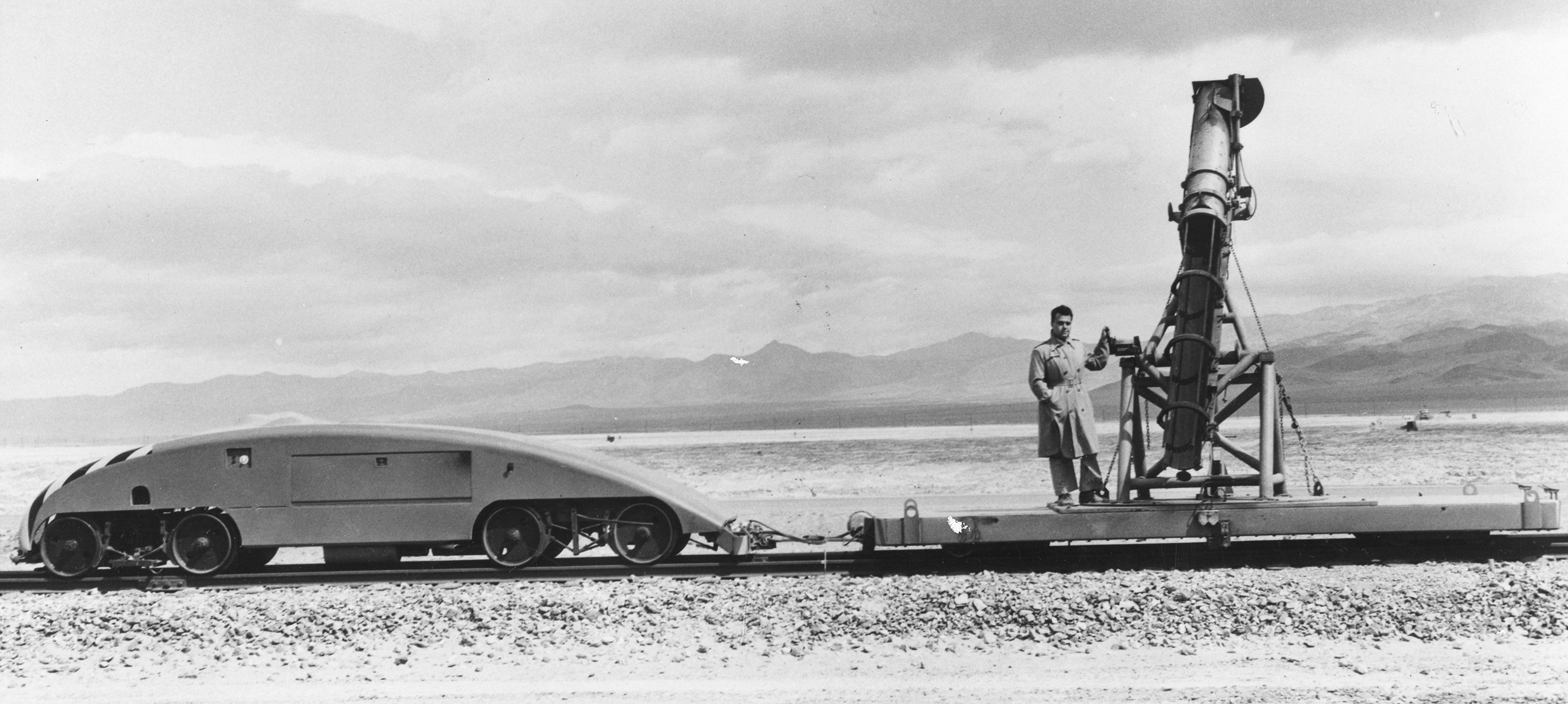
The Oral History Center is proud to announce the launch of the oral history of UC Berkeley engineering scientist and Professor Emeritus George Leitmann. This is a large oral history, twenty-three hours of recording. From February 12, 2018 until February 12, 2019, Dr. Leitmann and I spent eleven sessions at his home talking about everything from his childhood in Vienna to Adolf Hitler and Sigmund Freud— both of whom he saw up close—to reconnaissance during World War II, rocket science, UC Berkeley administration, the riots at Berkeley in 1969, mathematics, the evolution of science and engineering instruction, the importance of family, and the kindness of dogs, among many other subjects.
Clearly, the sheer density of his life, including over a half-century of service as a professor and an administrator at UC Berkeley, demands this size of oral history. Another reason to go into such depth is that we look to individual narrators as witnesses to complex historical events. We want them to speak about what they have seen, experienced, suffered, and accomplished. We want them to tell us something about the seemingly inexplicable, the invisible, or even the conventional and overdetermined.
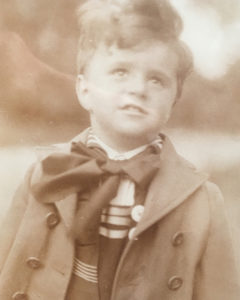
What do you learn when things fall apart? One of the themes that emerged clearly before we started filming at the beginning of 2018 was risk. George Leitmann’s life until the age of twelve or so had been pretty idyllic.
Then everything got turned upside down, and a young boy had to become a man very quickly. The coming catastrophe seemed highly improbable in the prosperous and stable Vienna of the 1930s. His elders told him so. They joked about it. Then he saw the man that everyone was talking about ride triumphantly into town, and he saw the other boys marching with crisp uniforms that had been brought in on trucks or out of hiding. His home was stolen and his family were split apart.
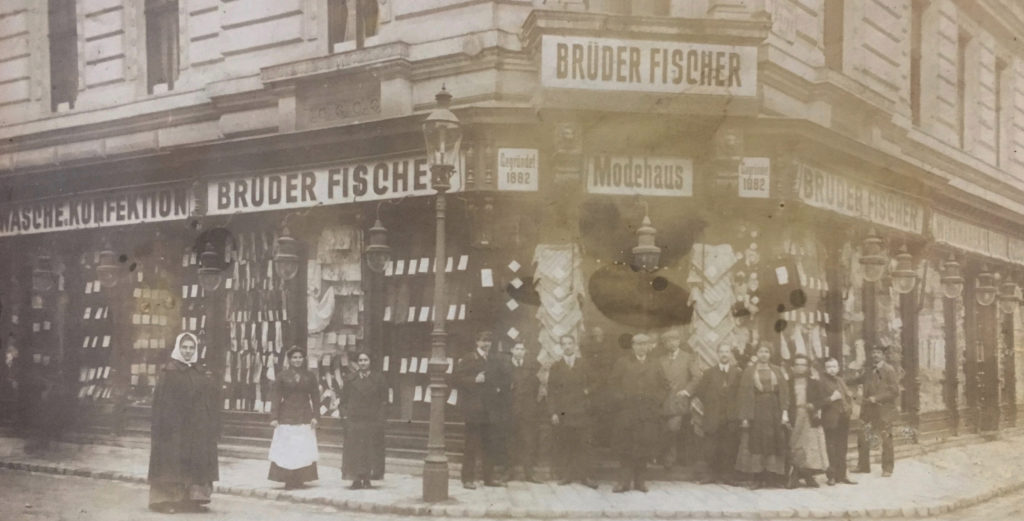
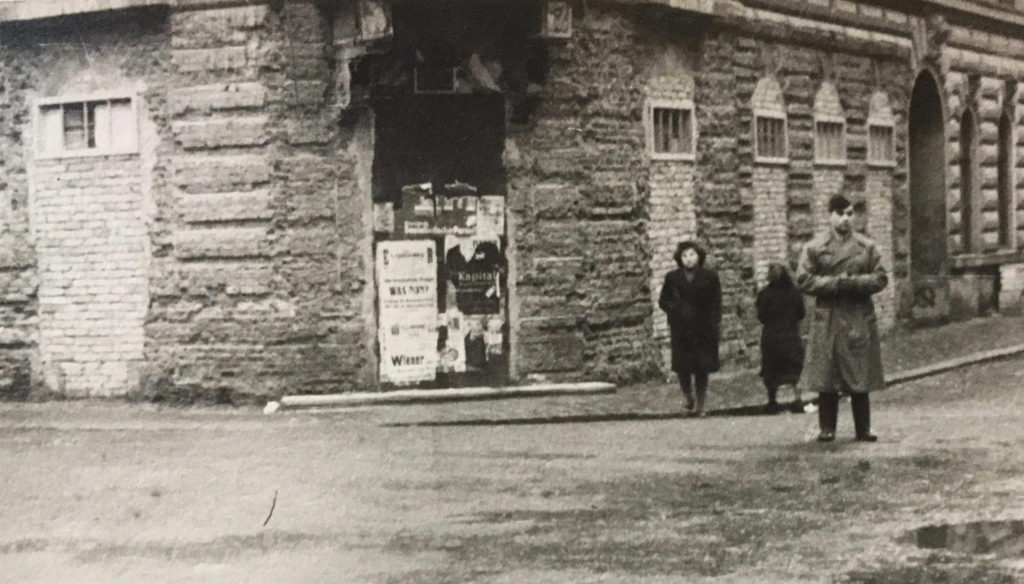
With the adaptability of youth, Dr. Leitmann escaped with some of his family to New York, where he developed a new version of stability and relative happiness. But he turned again to a world of danger by joining the US Army combat engineers in World War II. Combat engineers rebuild bridges and roads destroyed by a retreating army, and Leitmann performed reconnaissance for the engineers. In other words, he was in front of the group that was in front of an advancing army, often behind enemy lines, witnessing again and again the fates of the less fortunate. Risk.

The history of science focuses on the relationship between the social and the technical. We study the institutions, the people, and the politics that make knowledge. It has seldom been so clear to me the relationship between a scientist’s lived experience and their research. After the war and a master’s degree in physics, Dr. Leitmann was recruited to work on the theoretical foundations of rocket research for the US Navy. He turned this experience and knowledge into seminal contributions to something called control theory, basically the mathematical rules that govern a system in a defined state of optimality or stability. This sounds very abstract, but Leitmann’s research ends up being used in rockets, economics, fisheries management, seismic stabilization, management of wind shear in aircraft, artificial intelligence, and many other areas. Many of our society’s systems are organized around probability, what is most likely to happen or not happen. There is a danger in this design that Dr. Leitmann has lived before. One key element of his life’s work is to account and control for highly improbable and catastrophic threats to a system, any system. But this seemingly theoretical research trajectory was informed by visceral experiences of danger and catastrophe. This was one of the most striking themes of these interviews: plan for the improbable and the terrible. Don’t look away.
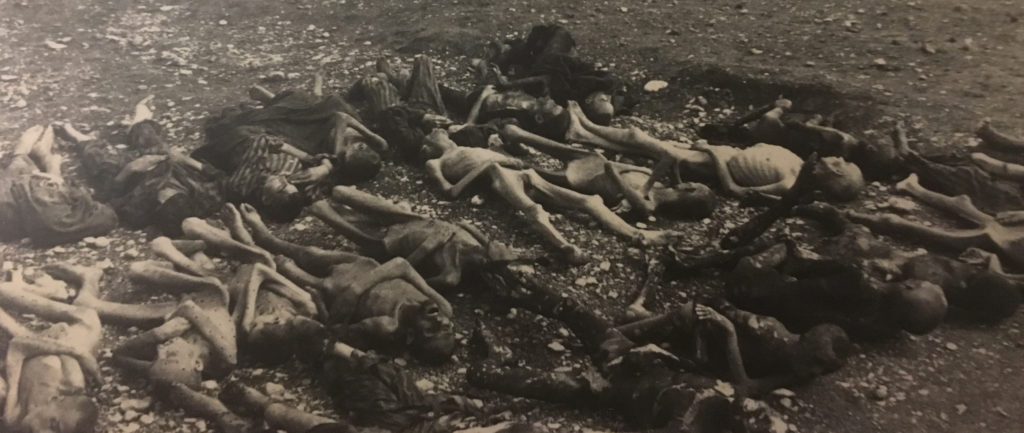
guys, because here my father was still missing.”
Finally, and because of all of the above, we want narrators of these long life histories to be wise. When I asked Dr. Leitmann to be wise, he would usually shrug and say he was no expert, even when he was. So that was itself a piece of wisdom: be humble. We are not so much individuals as people who stand and fall by our communities. When we were planning our interview sessions together, I was constantly trying to get a handle on the vast range of his research interests, or to understand how to approach the monumental and global tragedies to which he was an important witness, and Dr. Leitmann would always come back to people. Did he mention this person? Did he give enough credit or time to that person? Other people matter. Family matters. Family is bigger than family. Other people first. This is his way of living, and his secular way of repairing the world, about whose broken state he always worries. And this is one reason Dr. Leitmann and I both suspect he has been so celebrated and decorated by his peers, his colleagues, his country and many others. He stands as an example of how to move through difficult times and face problems without being consumed by them, to reach a state of gratitude and qualified happiness for the complicated gift of being part of something grander than oneself.
The Oral History Center wishes to thank Richard Robbins for a generous contribution that made this project possible.
Paul Burnett, Berkeley, CA, 2019
New Oral History Release: Peter Hanff on Books, Bibliography, and The Bancroft Library
New Oral History Release: Peter Hanff on Books, Bibliography, and The Bancroft Library
Rarely do we get to interview one of our own at The Bancroft Library. But if anyone fits within the “must interview” category, it is Peter Hanff. Hanff, who has been with the Bancroft Library for close to fifty years, is currently Deputy Director of The Bancroft Library. Hanff was born in Florida in 1944 and then moved with his family to Southern California in 1956. He attended the University of California Santa Barbara as an undergraduate and then the University of California Los Angeles where he earned his MLS. After an internship at the Library of Congress and a year and a half as assistant to the coordinator of information systems there, he was selected as a rare-book fellow at Indiana University’s Lilly Library. Hanff then accepted a position as reference librarian at The Bancroft Library in 1970. Hanff worked in various positions and on a variety of projects over the years, including as Interim Director and later Acting Director of The Bancroft Library. Hanff also is a noted scholar of the author Frank Baum and his series of Oz books. In this oral history, Peter Hanff discusses: his education background and early interest in young adult literature and book collecting; the transformation of library and archival work from the 1960s to the present; the administration, personnel, and collections of The Bancroft Library; and his contributions to the documentation of the works of Frank Baum and other authors.
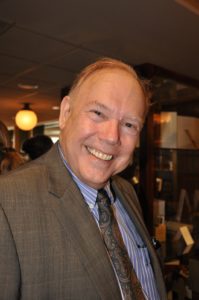
New Project Release: Marion and Herb Sandler Oral History Project
New Project Release: Marion and Herb Sandler Oral History Project
Herb Sandler and Marion Osher Sandler formed one of the most remarkable partnerships in the histories of American business and philanthropy—and, if their friends and associates would have a say in things, in the living memory of marriage writ large. This oral history project documents the lives of Herb and Marion Sandler through their shared pursuits in raising a family, serving as co-CEOs for the savings and loan Golden West Financial, and establishing a remarkably influential philanthropy in the Sandler Foundation. This project consists of eighteen unique oral history interviews, at the center of which is a 24-hour life history interview with Herb Sandler.
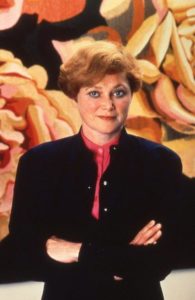
Marion Osher Sandler was born October 17, 1930, in Biddeford, Maine, to Samuel and Leah Osher. She was the youngest of five children; all of her siblings were brothers and all went on to distinguished careers in medicine and business. She attended Wellesley as an undergraduate where she was elected into Phi Beta Kappa. Her first postgraduate job was as an assistant buyer with Bloomingdale’s in Manhattan, but she left in pursuit of more lofty goals. She took a job on Wall Street, in the process becoming only the second woman on Wall Street to hold a non-clerical position. She started with Dominick & Dominick in its executive training program and then moved to Oppenheimer and Company where she worked as a highly respected analyst. While building an impressive career on Wall Street, she earned her MBA at New York University.
Herb Sandler was born on November 16, 1931 in New York City. He was the second of two children and remained very close to his brother, Leonard, throughout his life. He grew up in subsidized housing in Manhattan’s Lower East Side neighborhood of Two Bridges. Both his father and brother were attorneys (and both were judges too), so after graduating from City College, he went for his law degree at Columbia. He practiced law both in private practice and for the Waterfront Commission of New York Harbor where he worked on organized crime cases. While still living with his parents at Knickerbocker Village, he engaged in community development work with the local settlement house network, Two Bridges Neighborhood Council. At Two Bridges he was exposed to the work of Episcopal Bishop Bill Wendt, who inspired his burgeoning commitment to social justice.
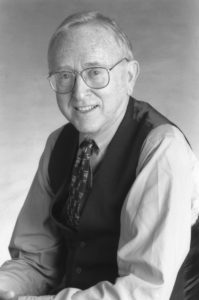
Given their long and successful careers in business, philanthropy, and marriage, Herb and Marion’s story of how they met has taken on somewhat mythic proportions. Many people interviewed for this project tell the story. Even if the facts don’t all align in these stories, one central feature is shared by all: Marion was a force of nature, self-confident, smart, and, in Herb’s words, “sweet, without pretentions.” Herb, however, always thought of himself as unremarkable, just one of the guys. So when he first met Marion, he wasn’t prepared for this special woman to be actually interested in dating him. The courtship happened reasonably quickly despite some personal issues that needed to be addressed (which Herb discusses in his interview) and introducing one another to their respective families (but, as Herb notes, not to seek approval!).
Within a few years of marriage, Marion was bumping up against the glass ceiling on Wall Street, recognizing that she would not be making partner status any time soon. While working as an analyst, however, she learned that great opportunity for profit existed in the savings and loan sector, which was filled with bloat and inefficiency as well as lack of financial sophistication and incompetence among the executives. They decided to find an investment opportunity in California and, with the help of Marion’s brothers (especially Barney Osher), purchased a tiny two-branch thrift in Oakland, California: Golden West Savings and Loan.
Golden West—which later operated under the retail brand of World Savings—grew by leaps and bounds, in part through acquisition of many regional thrifts and in part through astute research leading to organic expansion into new geographic areas. The remarkable history of Golden West is revealed in great detail in many of the interviews in this project, but most particularly in the interviews with Herb Sandler, Steve Daetz, Russ Kettell, and Mike Roster, all of whom worked at the institution. The savings and loan was marked by key attributes during the forty-three years in which it was run by the Sandlers. Perhaps most important among these is the fact that over that period of time the company was profitable all but two years. This is even more remarkable when considering just how volatile banking was in that era, for there were liquidity crises, deregulation schemes, skyrocketing interest rates, financial recessions, housing recessions, and the savings and loan crisis of the 1980s, in which the entire sector was nearly obliterated through risky or foolish decisions made by Congress, regulators, and managements. Through all of this, however, Golden West delivered consistent returns to their investors. Indeed, the average annual growth in earnings per share over 40 years was 19 percent, a figure that made Golden West second only to Warren Buffett’s Berkshire Hathaway, and the second best record in American corporate history.
Golden West is also remembered for making loans to communities that had been subject to racially and economically restrictive redlining practices. Thus, the Sandlers played a role in opening up the dream of home ownership to more Americans. In the offices too, Herb and Marion made a point of opening positions to women, such as branch manager and loan officer, previously held only by men. And, by the mid-1990s, Golden West began appointing more women and people of color to its board of directors, which already was presided over by Marion Sandler, one of the longest-serving female CEOs of a major company in American history. The Sandlers sold Golden West to Wachovia in 2006. The interviews tell the story of the sale, but at least one major reason for the decision was the fact that the Sandlers were spending a greater percentage of their time in philanthropic work.
One of the first real forays by the Sandlers into philanthropic work came in the wake of the passing of Herb’s brother Leonard in 1988. Herb recalls his brother with great respect and fondness and the historical record shows him to be a just and principled attorney and jurist. Leonard was dedicated to human rights, so after his passing, the Sandlers created a fellowship in his honor at Human Rights Watch. After this, the Sandlers giving grew rapidly in their areas of greatest interest: human rights, civil rights, and medical research. They stepped up to become major donors to Human Rights Watch and, after the arrival of Anthony Romero in 2001, to the American Civil Liberties Union.
The Sandlers’ sponsorship of medical research demonstrates their unique, creative, entrepreneurial, and sometimes controversial approach to philanthropic work. With the American Asthma Foundation, which they founded, the goal was to disrupt existing research patterns and to interest scientists beyond the narrow confines of pulmonology to investigate the disease and to produce new basic research about it. Check out the interview with Bill Seaman for more on this initiative. The Program for Breakthrough Biomedical Research at the University of California, San Francisco likewise seeks out highly-qualified researchers who are willing to engage in high-risk research projects. The interview with program director Keith Yamamoto highlights the impacts and the future promise of the research supported by the Sandlers. The Sandler Fellows program at UCSF selects recent graduate school graduates of unusual promise and provides them with a great deal of independence to pursue their own research agenda, rather than serve as assistants in established labs. Joe DeRisi was one of the first Sandler Fellows and, in his interview, he describes the remarkable work he has accomplished while at UCSF as a fellow and, now, as faculty member who heads his own esteemed lab.
The list of projects, programs, and agencies either supported or started by the Sandlers runs too long to list here, but at least two are worth mentioning for these endeavors have produced impacts wide and far: the Center for American Progress and ProPublica. The Center for American Progress had its origins in Herb Sandler’s recognition that there was a need for a liberal policy think tank that could compete in the marketplace of ideas with groups such as the conservative Heritage Foundation and the American Enterprise Institute. The Sandlers researched existing groups and met with many well-connected and highly capable individuals until they forged a partnership with John Podesta, who had served as chief of staff under President Bill Clinton. The Center for American Progress has since grown by leaps and bounds and is now recognized for being just what it set out to be.
The same is also true with ProPublica. The Sandlers had noticed the decline of traditional print journalism in the wake of the internet and lamented what this meant for the state of investigative journalism, which typically requires a meaningful investment of time and money. After spending much time doing due diligence—another Sandler hallmark—and meeting with key players, including Paul Steiger of the Wall Street Journal, they took the leap and established a not-for-profit investigative journalism outfit, which they named ProPublica. ProPublica not only has won several Pulitzer Prizes, it has played a critical role in supporting our democratic institutions by holding leaders accountable to the public. Moreover, the Sandler Foundation is now a minority sponsor of the work of ProPublica, meaning that others have recognized the value of this organization and stepped forward to ensure its continued success. Herb Sandler’s interview as well as several other interviews describe many of the other initiatives created and/or supported by the foundation, including: the Center for Responsible Lending, Oceana, Center on Budget and Policy Priorities, Learning Policy Institute, and more.
Herb and Marion Sandler also played key roles in the formation and funding of two important research centers here on the UC Berkeley campus which have a global reach: the Berkeley Center for Equitable Growth (CEG) and the Human Rights Center. The CEG is directed by economist Emmanual Saez and has supported the influential work of Thomas Piketty which looks at methods for reducing wealth and income disparities around the globe. The Human Rights Center has for the past 25 years investigated and shed light upon human rights abuses around the globe.
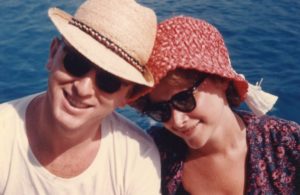
A few interviewees shared the idea that when it comes to Herb and Marion Sandler there are actually three people involved: Marion Sandler, Herb Sandler, and “Herb and Marion.” The later creation is a kind of mind-meld between the two which was capable of expressing opinions, making decisions, and forging a united front in the ambitious projects that they accomplished. I think this makes great sense because I find it difficult to fathom that two individuals alone could do what they did. Because Marion Sandler passed away in 2012, I was not able to interview her, but I am confident in my belief that a very large part of her survives in Herb’s love of “Herb and Marion,” which he summons when it is time to make important decisions. And let us not forget that in the midst of all of this work they raised two accomplished children, each of whom make important contributions to the foundation and beyond. Moreover, the Sandlers have developed many meaningful friendships (see the interviews with Tom Laqueur and Ronnie Caplane), some of which have spanned the decades.
The eighteen interviews of the Herb and Marion Sandler oral history project, then, are several projects in one. It is a personal, life history of a remarkable woman and her mate and life partner; it is a substantive history of banking and of the fate of the savings and loan institution in the United States; and it is an examination of the current world of high-stakes philanthropy in our country at a time when the desire to do good has never been more needed and the importance of doing that job skillfully never more necessary.
Martin Meeker, Charles B. Faulhaber Director, Oral History Center, UC Berkeley
List of Interviews of the Marion and Herbert Sandler Oral History Project
Ronnie Caplane, “Ronnie Caplane: On Friendship with Marion and Herb.”
Joseph DeRisi, “Joe DeRisi: From Sandler Fellow to UCSF Professor of Biochemistry.”
Stephen Hauser, “Stephen Hauser: Establishing the Sandler Neurosciences Center at UCSF.”
Russell Kettell, “Russ Kettell: A Career with Golden West Financial.”
Thomas Laqueur, “Tom Laqueur: On the Meaning of Friendship.”
Bernard Osher, “Barney Osher: On Marion Osher Sandler.”
Michael Roster, “Michael Roster: Attorney and Golden West Financial General Counsel.”
Kenneth Roth, “Kenneth Roth: Human Rights Watch and Achieving Global Impact.”
Herbert Sandler, “Herbert Sandler: A Life with Marion Osher Sandler in Business and Philanthropy.”
James Sandler, “Jim Sandler: Commitment to the Environment in the Sandler Foundation.”
Susan Sandler, “Susan Sandler: The Sandler Family and Philanthropy.”
William Seaman, “Bill Seaman: The American Asthma Foundation.”
Paul Steiger, “Paul Steiger: Business Reporting and the Creation of ProPublica.”
Richard Tofel, “Richard Tofel: The Creation and Expansion of ProPublica.”
Ferlinghetti at 100
by Steven Black, Head of Acquisitions
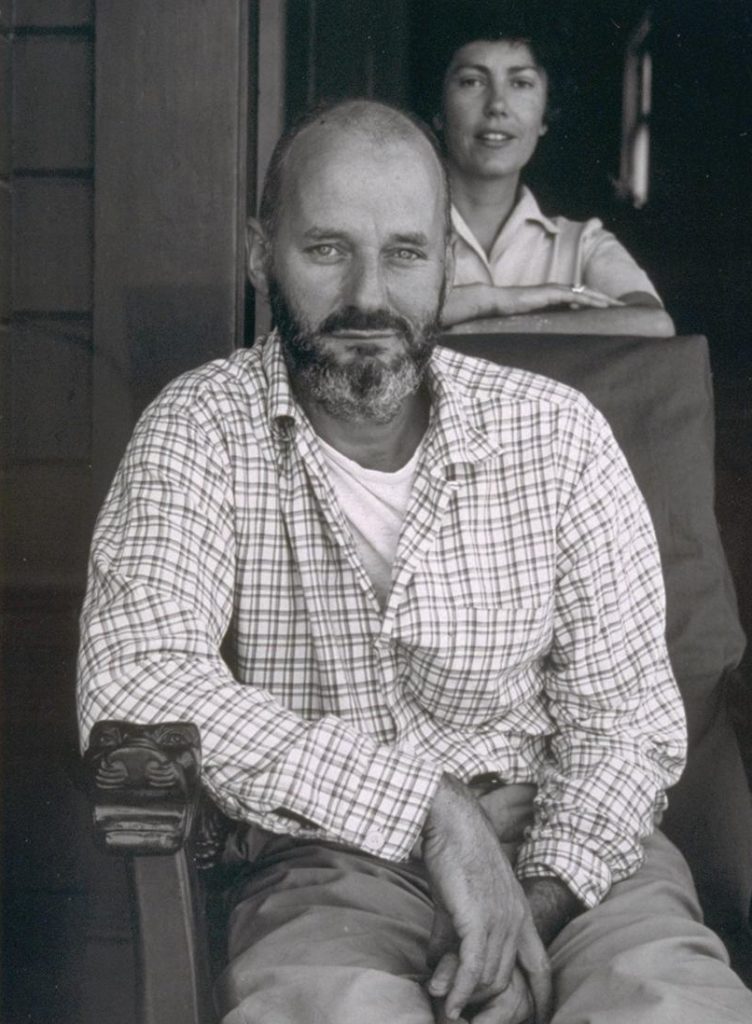
From across San Francisco Bay, the explosion of civic pride that is being expressed in the lead-up to Lawrence Ferlinghetti’s 100th birthday (March 24) is felt in Berkeley, and in particular at The Bancroft Library. As the proud repository of Lawrence Ferlinghetti’s literary archive, as well as records of his publishing house City Lights Books, generations of Library staff have been privileged to meet with Ferlinghetti over the years.
In 1996, Bancroft hosted the symposium “Ferlinghetti, City Lights, and the Beats in San Francisco: From the Margins to the Mainstream” which was followed by the Friends of The Bancroft Library keepsake The poet’s eye : a tribute to Lawrence Ferlinghetti, edited by Richard Ogar.
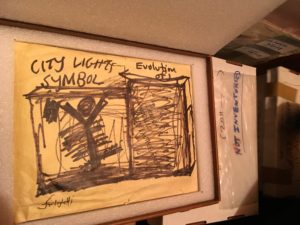
More recently, Bancroft’s curator of Rare Books and Literary Manuscripts is seen here with Ferlinghetti in 2016 to arrange the acquisition of the most recent installment of his papers.
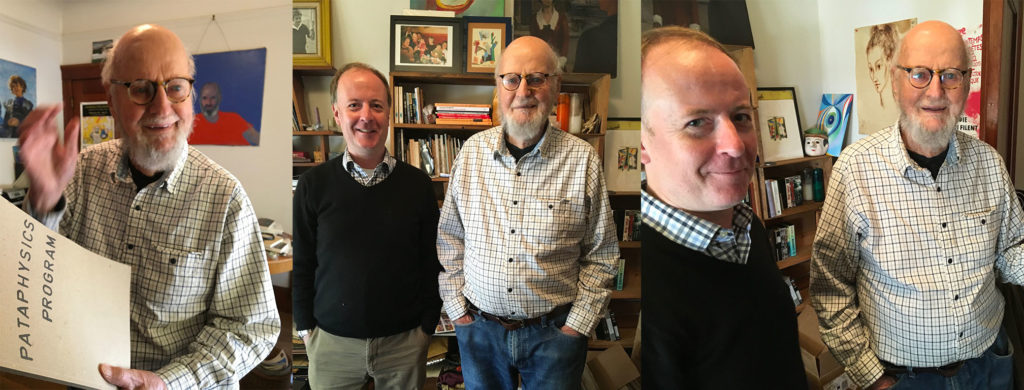
One interesting characteristic of the poet’s creative method is the use of reporter’s notebooks in the composition of his verses, which recalls these oft-quoted lines from William Carlos Williams: “It is difficult/ to get the news from poems/ yet men die miserably every day/ for lack// of what is found there” !
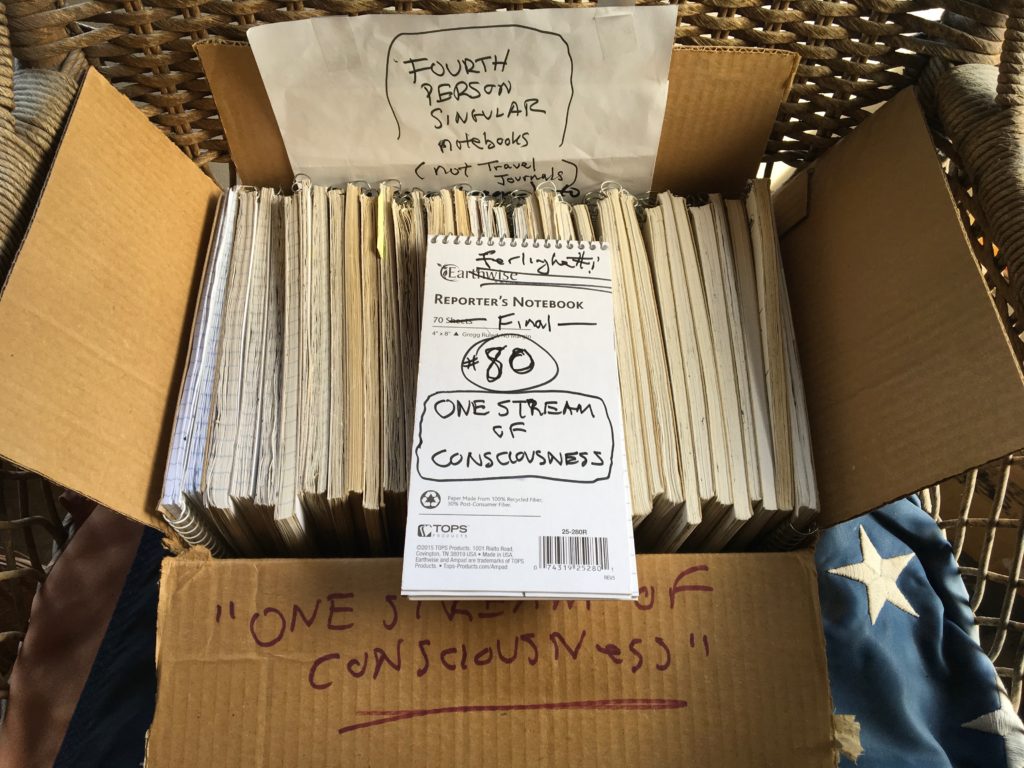
Far from resting on his well-earned laurels, Ferlinghetti has marked this milestone month with the publication of a new novel, Little Boy, released just this week.
OHC Director’s Column – February 2019
From the Oral History Center Director:
David Pearson, CEO of the winery Opus One, said it something like this: Burgundy and Bordeaux have a deserved reputation for making some pretty good wines, but what sets these two French wine regions apart from and above the rest are their storied histories of making quality wine for generation upon generation. The wine itself is not only improved because of years of trial and error but the meaning of the wine is deepened because of the value placed on it by the people who have made and drunk it over hundreds of years. Pearson’s explanation was one of the highlights, for me, of the voices heard at the recent annual meeting of Napa Valley Vintners (NVV). I was invited to attend because we at OHC have partnered with the Vintners to do an oral history project documenting the history of the organization on the occasion of their 75th anniversary this year.
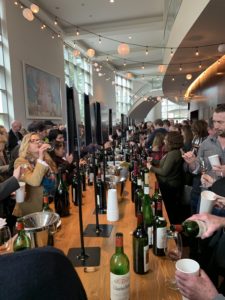
Pearson’s point was not lost on the several hundred vintners and others associated with Napa wine at the January 17th meeting. With over 150 years of continuous winemaking in the valley, many vintners in Napa are fully embracing the multiple benefits that come from knowing one’s history: from appreciating the moments of triumph to acknowledging and correcting one’s errors, from learning something new (and retaining it) during every vintage to recognizing that history might add literal market value to the wine. These points were brought to life during the reception that followed in which most every vintner brought from their own cellars Napa wines new and old to be shared. Seeing the lineup of hundreds of bottles produced over nearly 75 years provided ample evidence of the continuity of this history. But having the opportunity to taste a 1958 Charles Krug cabernet or a 1964 Inglenook cabernet (the last year it was produced by the legendary John Daniel, Jr.), was a great thrill as the wines have aged gracefully, wearing their decades in the bottle like badges of honor. You could taste the history.
The Oral History Center played a key role in what I think was another highlight of the event. Our very own David Dunham produced a video to open the proceedings: Just after the lights went down in the auditorium, a deeply accented Italian-American voice bursts from the speakers and the audience quickly goes silent, and listens. The voice is of Louis M. Martini, the famed California-by-way-of-Genova winemaker who established his winery in 1922 (yes, in the middle of Prohibition). Martini also was a founder of NVV and in this clip, from an interview conducted by OHC in the late 1960s, he recalls the impetus to establish the organization: “To eat and drink!” In the video, Martini is followed by another NVV founder, Robert Mondavi, who recounts how their agenda expanded into sharing winemaking best practices, dealing with government regulation, and promoting Napa Valley around the globe. Sitting in the middle of that auditorium, I was captivated by the voices on the screen, and pleased that the assembled crowd appeared to be soaking it up too. And the message they heard was that great things are possible when sometimes very independent-minded people decide to throw in together, recognize common purpose, and forge ahead with a shared belief in the value of what they are doing.
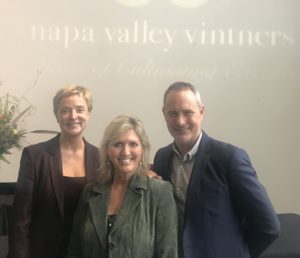
These wine industry interviews recorded as many as 50 years ago are now being augmented by a new effort by the Oral History Center to document the history of the California wine industry. One part of this broader effort is a project of a dozen interviews looking at the history of NVV but I hope that we can build a bigger, broader project as well. As I conduct these interviews, it is not difficult to think about the role of the interviewer too. I am thankful that Ruth Teiser, the woman who conducted most of those early wine history interviews, saw the value of this topic and took the considerable time needed to ask the questions and capture the voices of these key figures. Most of her narrators are now gone but they still speak to our generation, and generations to come.
To help document this long, fascinating, and, yes, important history, we are actively seeking partners and sponsors, ideas and information. So, if this project sounds interesting to you and you want to help us make it happen, please contact me. Let’s sit down over a glass of wine and talk about the remarkable history of wine in California and the promise that lies ahead.
Martin Meeker, Charles B. Faulhaber Director
OHC Director’s Column – January 2019
From the Oral History Center Director:

Paul “Pete” Bancroft, III, a 1951 graduate of Yale, a pioneer in venture capital, and the eldest great-grandson of Bancroft Library founder Hubert Howe Bancroft, died peacefully in his sleep on January 3, 2019, at the age of 88.
We at The Bancroft Library’s Oral History Center are extremely grateful for his support of over the years. The word “support,” however, is wholly inadequate to capture what he did for oral history at Berkeley. Pete Bancroft was, in fact, its greatest single benefactor in the 65-year history of our office.
Pete’s first major engagement with the Oral History Center (or, as we were known at the time, the Regional Oral History Office) began around 2007 with discussions about a possible oral history project documenting the history of venture capital in the Bay Area. Not only did Pete step forward to sponsor the project, he played a critical role in helping to articulate the major themes and issues to be covered in the interviews. He also created an advisory committee of scholars and leaders in the field that gave the project instant credibility and served on that committee; and he reached out personally to many of the key players whom we wished to interview, setting forth the goals of the project and convincing those who might have been reluctant to participate. Sally Hughes, who was the project director and interviewer for these oral histories, wrote to me upon learning of Pete’s death: “As the interviewer for the Center’s venture capital project, I could not have asked for a better sponsor in organizing, completely funding, and advising the project every step of the way. In his warm and supportive manner, he made it clear that we were a partnership in trying to create the best possible series of interviews on the foundational era of venture capital. It was a subject dear to his heart as one of its early participants.” When completed, the project resulted in 19 lengthy oral history interviews with the pioneers of venture capital, including Franklin “Pitch” Johnson, Art Rock, Reid Dennis, Tom Perkins, Don Lucas, Don Valentine, Bill Draper, Bill Bowes, and Pete himself. In addition, Pete facilitated the donation of another group of interviews already conducted by the National Venture Capital Association. Pete Bancroft played a crucial role in creating this “must read” resource for anyone interested in the history of venture capital.
The years around the financial crisis of 2008 were difficult ones for this office. In addition to waning donations and external support, several retirements left us greatly understaffed. For the few of us remaining, myself included, there was a nervously voiced worry that the fifty-plus year tradition of oral history at Berkeley might be reaching an end. In the wake of these worries, Pete was conspiring behind the scenes to make certain that oral history would continue at Berkeley. He was a good friend of long-time Bancroft Library director Charles Faulhaber. When Faulhaber retired in 2011, Pete paid tribute to his friend’s leadership of Bancroft by creating the Charles B. Faulhaber Endowment, whose income was to be dedicated to the oral history program. Pete had only one request: that the name of the office be changed. Happily, the staff of the center recognized that we had long ago outgrown the “regional” in our former name and readily embraced the new moniker of the “Oral History Center of The Bancroft Library.”
Other than the name change, Pete asked for nothing in return for creating the Faulhaber endowment, which was built with his donations and those of many of his friends and venture capital colleagues. This endowment has been critical to the recent success of this office. Because only one of eight full-time staff positions, and none of the related costs of conducting interviews (equipment, transcription, travel), is paid for by the university, all of our projects require external funding. However, project funds can only support project-related activities and there is a lot more that we do — and want to do — than just conducting interviews, transcribing them, and editing them. Pete Bancroft’s “Charles Faulhaber Endowment” allows the Oral History Center to do so much more: we can host formal and informal training for those who want to learn oral history methodology from our highly-skilled team of historians; we can now create interpretative materials based on the interviews that we conduct, including, now, three seasons of our in-depth podcast series, “The Berkeley Remix”; and, perhaps most importantly, the Faulhaber endowment allows us to conduct research and development in support of new projects. We are fortunate to have a smart, ambitious, and creative group of oral historians who come up with potentially important project ideas; this endowment gives us the ability to pursue those ideas by doing background research, conducting pilot interviews, and seeking funding to make these ideas a reality. Thus, Pete Bancroft continued his career in venture capital with the Oral History Center: by providing perpetual seed funding, he has established a lasting legacy of innovation, experimentation, and entrepreneurship among the publicly-engaged scholars at the center!
In his final months of life, Pete Bancroft continued to think about and look after his friends, including the Oral History Center. Charles Faulhaber, returning the honor given to him by Pete, created the “Pete Bancroft Endowment for the Oral History Center,” with an initial gift from Pitch Johnson and additional gifts from many of the same philanthropists who supported the earlier one as well as his ‘Hill Billies’ campmates at the Bohemian Club. And like the Faulhaber endowment, this one will support the ongoing work on the Oral History Center. In a touching note just after Pete’s passing, Faulhaber let me know that Pete was thinking of us until the end, making a major donation to the endowment in the final weeks of his life. With this news, we sadly bid farewell to an esteemed and gracious benefactor — our angel investor.
Martin Meeker, Charles B. Faulhaber Director of the Oral History Center
Notes from the Backlog: Education of the Sun King
By Randal Brandt
This is the first entry in an occasional series (perhaps very occasional) of articles describing Bancroft Library materials that have recently been made available for research.
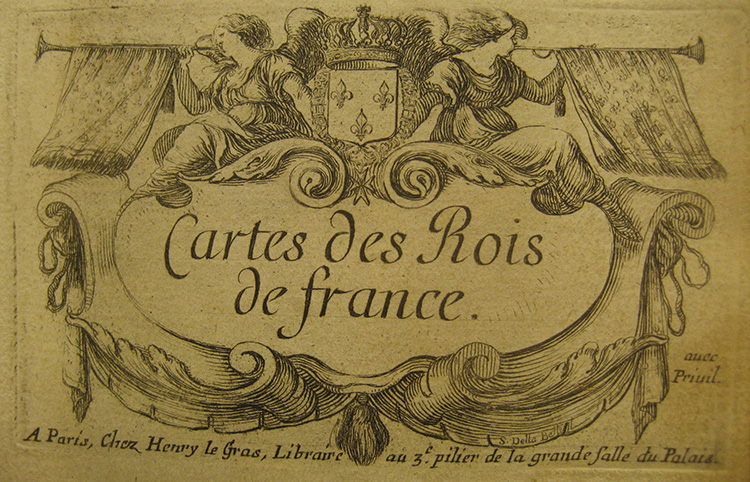
Playing cards can be used for many purposes other than recreation. Three decks of playing cards designed for a very specific purpose–to further the education of a young monarch–have been cataloged at The Bancroft Library.
France’s Louis XIV (1638-1718), known as the Sun King, ruled for 72 years, longer than any other European sovereign. Born on September 5, 1638, to King Louis XIII of France (1601-1643) and Anne of Austria (1601-1666), the future Louis XIV was his parents’ first child. When his father died on May 14, 1643, young Louis ascended to the throne at the tender age of four under the regency of his mother, who was assisted by her chief minister, the Italian-born Cardinal Jules Mazarin (1602-1661).
One of Cardinal Mazarin’s duties was to supervise the education of the young king. To that end, he commissioned Jean Desmarets de Saint-Sorlin (1595-1676), a member of the Académie Française, to devise a series of card games, which were in vogue at court, to interest Louis in his studies. The series comprises four sets of educational cards, each bearing a full-length figure, designed and engraved by the noted Florentine engraver Stefano della Bella (1610-1664), with descriptive text and a number. In 1644, Desmarets de Saint-Sorlin published an explanation of them with the title Les jeux de cartes, des roys de France, des reines renommées, de la géographie, et des fables, cy devant dediez à la reine régente, pour l’instruction du roi (“The Card Decks [or Sets] of the Kings of France, Renowned Queens, Geography, and Fables, Previously Dedicated to the Queen Regent, for the Instruction of the King.”)
Bancroft holds three of the four sets of cards. The Cartes des rois de France (“Cards of the Kings of France”) set contains 39 biographical cards, beginning with Pharamond and ending with young Louis himself, who is depicted as a boy riding in a triumphal chariot with his mother, Anne, holding the reins. The descriptive texts recount the territorial gains and losses, marriage alliances, royal character, and political and military adventures of the kings of France. Jeu des reynes renommées (“Deck [or Set] of Renowned Queens”) has 52 biographical cards ranging from Martesie, Queen of the Amazons, to Anne of Austria. The set comprises four series of 13 cards each, with descriptive legends and a single descriptive adjective (pious, clever, cruel, saintly, wise, brave, etc.) at one of the upper corners. Jeu de la géographie (“Deck [or Set] of Geography”) also has 52 cards, with figures emblematic of the country and text recording the nation’s size, borders, natural resources, principal cities, etc. Thirteen of the cards relate to America.

The cards are known to exist in four states, with later versions having numbers and suits added, and some of the images modified or replaced (for example, the image of the young Louis XIV was later substituted with a depiction of a statue of the king as a grown man). Bancroft’s sets, which were purchased in 2013, are all in the second state. Each card has been cut out and mounted on a separate leaf. The three sets are bound together as a single volume in a contemporary vellum binding. These cards, which were later reprinted twice, first in 1664 and again in 1698, are well-known in the literature documenting the history of playing cards. However, very few examples survive in libraries. With three complete sets, Bancroft’s volume represents one of the most comprehensive collections available for research.
Cartes des rois de France (“Cards of the Kings of France”)
Jeu des reynes renommées (“Deck [or Set] of Renowned Queens”)
Jeu de la géographie (“Deck [or Set] of Geography”)
New Release Oral History: Phil Freese, Innovator and Leader in the Practice of Winegrowing
The Oral History Center is pleased to release a new life history interview with leading winegrower Phil Freese.
Philip Freese is a co-founder and co-owner of Vilafonté, a South African winery that produces varietal red wine. Freese was born in 1945 in Indiana. He was educated at Purdue University (BS) and University of California Davis (PhD) where he studied biochemistry. He left the field of biochemistry to pursue a career in the wine industry in 1978, first working as vineyard manager for a CalPlans vineyard in Napa County and then, beginning in 1982, as a winegrower for Robert Mondavi, eventually becoming Vice President of Winegrowing. In the 1990s he started both a wine consulting firm, Winegrow, and, with his wife winemaker Zelma Long, the winery Vilafonté in South Africa.
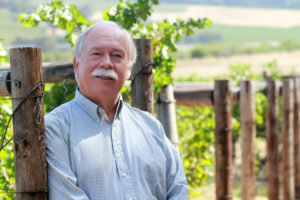
In this interview, Freese discusses the following topics: upbringing and education in science; early career as a biochemist; the evolution of the California wine industry from the 1970s through the 1990s, with a special focus on Napa Valley and viticulture; the multiple facets of viticultural practice and research, including the definition of “winegrowing”; the North Coast Viticultural Research Group; Robert Mondavi Winery in the 1980s and 1990s; vineyard consulting practices; the wine industry in South Africa from the 1990s through the 2010s; and Vilafonté Winery in South Africa.
This interview will be engaging to anyone interested in wine from the lens of science, farming, or just sheer pleasure. Freese was one of the American pioneers of the idea of winegrowing, or the notion that wine is made primarily in the vineyard, less so in the cellar — that to make good wine, what you need first and foremost is quality grapes. So, Freese discusses in great detail the history of learning better viticultural practices from irrigation to vine canopy management.
Martin Meeker, Oral History Center
New Release Oral History: Marshall Krause, ACLU of Northern California Attorney and Civil Liberties Advocate
The Oral History Center is pleased to release our life history interview with famed civil liberties lawyer, Marshall Krause.
Marshall Krause served as lead attorney for the ACLU of Northern California from 1960 through 1968 and subsequently served as an attorney in private practice where he continued to work civil liberties cases. Krause attended UCLA as an undergraduate and graduated from Boalt Hall, UC Berkeley School of Law after which he clerked for Judge William Denman and Justice Phil Gibson.
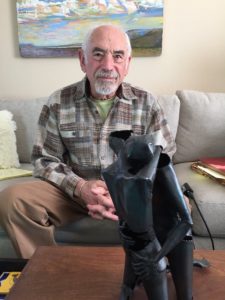
In this oral history, Mr. Krause discusses: his upbringing and education, including his time at Boalt Hall; clerkships with judges Denman and Gibson and how those experiences influenced his progressive political outlook; his tenure as ACLU staff attorney, including many of the cases he worked; his experiences arguing several cases before the United States Supreme Court; his perspective of the San Francisco counterculture of the 1960s; and his professional and legal career after leaving ACLU in 1968, which included arguing additional cases before the US Supreme Court.
This oral history is significant for any number of reasons, but it is especially worthwhile for anyone interested in the current state of battles around the freedom of speech — from obscenity through political speech — and how these were decided in the courts in decades past, establishing the precedents under which we live today.
Martin Meeker
